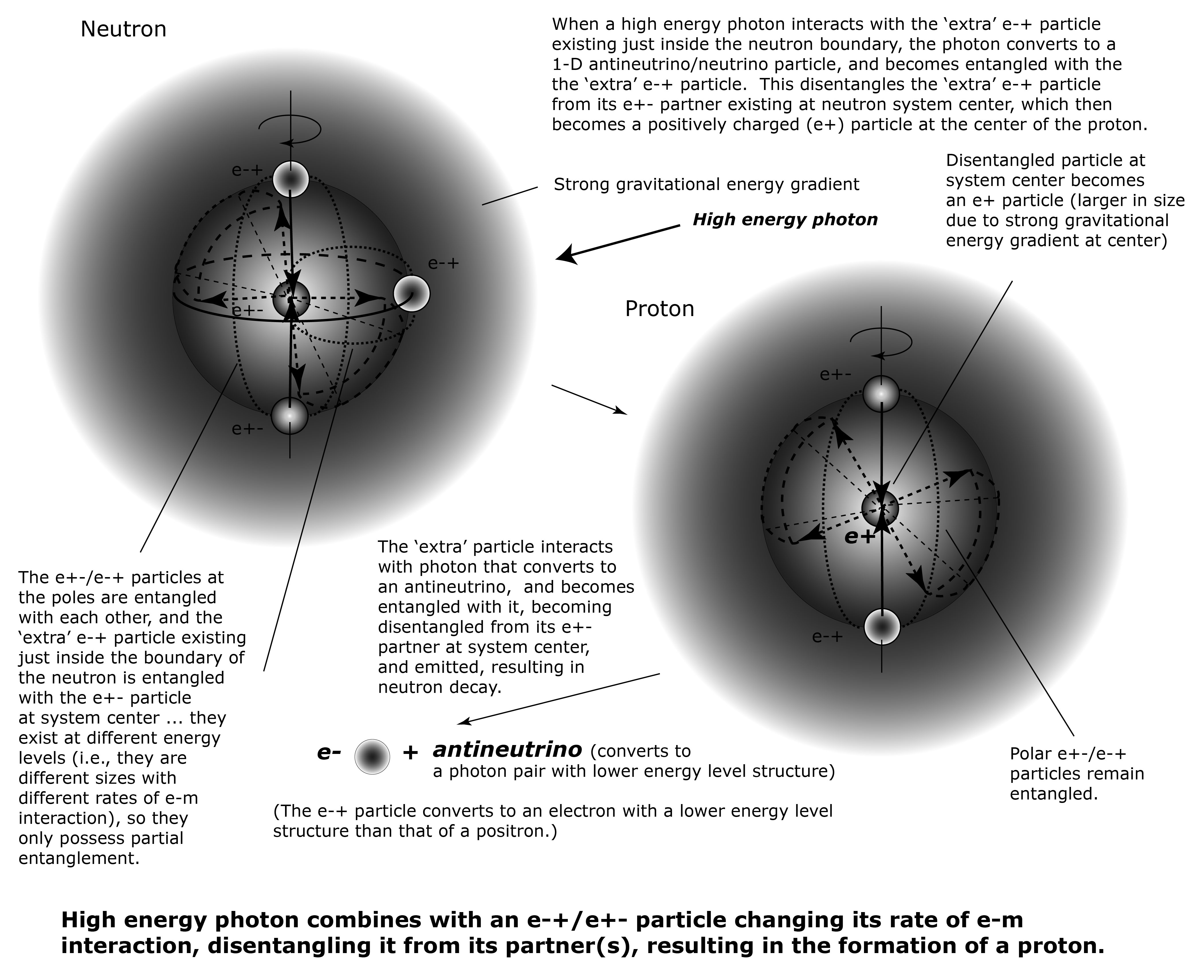 A neutron may be composed of a proton core with an e-+ particle (formerly occupying an energy level in a distant orbital) revolving about its circumference within the proton boundary. This ‘extra’ e-+/e+- particle is partially entangled with a much larger e+-/e-+ particle (i.e., quark) at the system center of the proton core. The proton also consists of two entangled e-+/e+- particles (i.e., quarks) with opposing e-m directionality, each existing at an opposing pole of the proton.
A neutron may be composed of a proton core with an e-+ particle (formerly occupying an energy level in a distant orbital) revolving about its circumference within the proton boundary. This ‘extra’ e-+/e+- particle is partially entangled with a much larger e+-/e-+ particle (i.e., quark) at the system center of the proton core. The proton also consists of two entangled e-+/e+- particles (i.e., quarks) with opposing e-m directionality, each existing at an opposing pole of the proton.
The ‘extra’ e-+/e+- particle may have originally occupied a distant orbital in a region of much weaker gravitational energy gradient with a higher rate of e-m interaction and a corresponding faster rate of time. Now, within the outer boundary of the proton (composing a neutron), it exists in a region of stronger gravitational energy gradient with a slower rate of e-m interaction and time. So it now has a slower rate of e-m interaction than it had in its distant orbital. But its entangled e+-/e-+ partner (i.e., quark) existing at system center is much larger and maintains its higher rate of e-m interaction. As a result, the two e-+/e+- particles now only have a partial entanglement, since the ‘extra’ e-+ particle has a slower rate of e-m interaction.
This partial entanglement is unstable, and can be disrupted by any interaction with outside energy. For example, when a photon of sufficient energy collides with the orbital e-+/e+- particle, it changes the e-+/e+- particle’s rate of e-m interaction or may put it out-of-phase with its entangled e+-/e-+ partner at system center, causing it to become disentangled from its e+-/e-+ partner at the proton system center.
The orbital e-+/e+- particle then becomes entangled with a 1-D anti-neutrino/neutrino formed from the energy of the photon (and the energy of disentanglement?). The antineutrino/neutrino particle consists of two 1-D photons “sitting” on top of each other, perpendicular to each other.
The remaining proton consists of its entangled polar e-+/e+- and e+-/e-+ particles with an unentangled e+ particle (with positive charge field) confined at system center ‘trapped’ inside the entanglement of the polar particles. The e+ particle (i.e., quark) at system center possesses unidirectional quantum properties, and produces a charge field due to non-alternating e-m directionality (i.e., unidirectional 2-D e-m energy) within a strong gravitational energy gradient.
